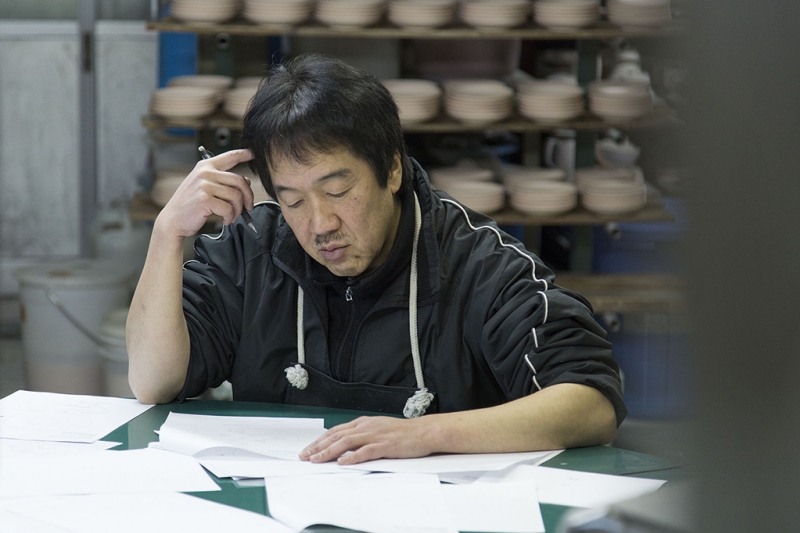Interview: Mr. Harada, Housengama
The Housengama pottery in Arita is no stranger to working with contemporary designers; it was one of the original potteries behind the successful 1616 / arita japan brand and currently produces the Standard collection by Teruhiro Yanagihara. Gen Harada is the current director of Housengama. Here he explains how the ambitious 2016/ project differs from what has gone before and the new challenges that his, and other Arita potteries, face in the near future.
- Housengama was first established during the Edo period, could you tell us a little about the beginnings of the company?
Our ancestors produced pottery for the Nabeshima clan during the Edo period. They specialised in handpainting using red and gold colours. At that time, the porcelain vessels would have been fired at other kilns and the pottery that my ancestors owned was not yet called ‘Housen’. It was my father who named the pottery Housengama (Housen kiln) in 1989. At the same time, the uniquely mixed red colour that we have used for centuries was named ‘Housen Red’. The products that we were making during that period were typical of classical designs and received much acclaim. Since then, Housen has also developed a system for mass producing durable tableware for the restaurant industry. However, in recent years this industry has become volatile and Housengama suffered as a result. It was at this point that Momota-San asked us to join the 1616 / arita japan project, which was then a new brand with its own shop opening at the Palace Hotel in Tokyo.
- You worked with international designers and created new aritaware previously for 1616 / arita japan. How does the 2016/ project differ from this earlier endeavour?
When collaborating with designers who have no real experience of working in ceramic or porcelain, it can be difficult to modify their designs for production. They don’t know how the vessel will shrink during firing or how difficult their shapes might be for mold making etc. However, the designer we are working with for 2016/ does have experience of porcelain so he understands the basic conditions and has proposed us a workable design – therefore it has been an easier process. We’ve found that the designers who have experience in product design have an aptitude of designing for mass production.
That said, there have been some production challenges with our 2016/ products; we have developed a complex new mold with the experts at the Saga Ceramics Research Laboratory – their skills are remarkable. We asked the research center to make a prototype with their CNC milling machines from which we can produce molds for mass production. This is costly and complex but I think it is necessary to challenge our pottery with new shapes that were not possible to produce previously.
- 16 designers are working on new products with the potteries in Arita. The final number of items in the 2016/ collection will be huge.
That's right. Since each of the designers has designed more than 10 items, there will be in excess of 200 new items in the 2016/ collection. That means more than 200 molds are required and there are likely to be difficulties ahead as we all shift into the production phase. Cultivating new distribution channels for all these products will be challenging as well.
- What are your thoughts on the future difficulties of the project?
How the products perform at the retail stage is key to the future success of this venture. How retailers stock the products and work with the end user, on behalf of us, is hard to control. Producing and holding stock of these untested items is risky too, for everyone including the potteries. Communicating an awareness of these things with all the different people and different businesses involved in each product is an important aspect of the project.










